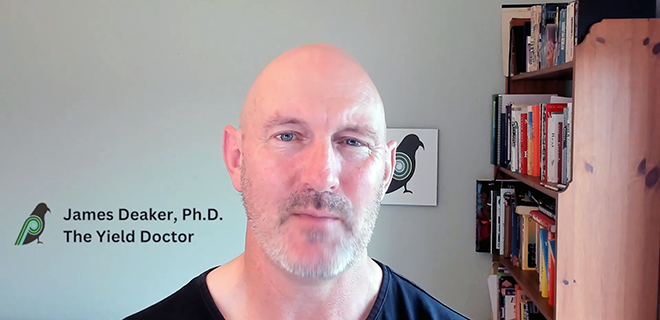
James Deaker, aka The Yield Doctor, outlines how AI is reshaping ad ops—from incremental improvements to major workflow shifts and the emerging unknowns teams should keep an eye on.
Sometimes the ad ops world gets itself worked up over the wrong question. The moment AI hits the conversation, folks default to binaries — good or bad, job-saving or job-stealing, Chrome sunset déjà vu or the dawn of something new.
But James Deaker, aka The Yield Doctor, doesn’t talk about AI in binaries when discussing ad ops. He plots a definitive course — one we’re all going to have to get comfortable navigating. What’s that framework? Evolution, revolution, and the zone where it’s simply too early to tell.
Evolution: Where AI Is Evolving, Not Exploding
“Not every AI application is gonna be truly transformative… there’s gonna be a series of incremental improvements in many different areas.” – James Deaker
There are parts of ad tech that AI will keep nudging forward without rewriting the whole playbook. Deaker likens it to a new model year for a car. The car might look sleeker, maybe has a bigger screen, but it still drives the same.
Where is this true for AI in Ad Ops:
- Ad serving mechanics
- Audience segmentation and clustering
- Forecasting and inventory management
- Reporting and dashboards
These won’t be areas where AI suddenly turns everything upside down.
Will it be useful? Yes. Job-ending? No. Workflow-breaking? Definitely not.
The mandate here is pretty straightforward: Don’t burn all your energy on tweaks. Hold vendors accountable for the small gains, but don’t reorganize your entire workflow around them.
Revolution: Where Ops Gets Rewritten
“The tasks that now take 5, 10, 20 different steps for an ad operations team are gonna be compressed… we have a command to start the task, we’re gonna look at the output to check that it executed correctly.” – James Deaker
This is where the shift occurs and where ops leaders need to pay attention.
A new infrastructure layer will emerge around how AI systems communicate with each other. This is where the Advertising Context Protocol (AdCP), sitting on top of the Model Context Protocol, will act as a USB-C plug for advertising workflows so buyer-side and seller-side agents can speak cleanly.
But we will see bigger shifts in the actual work:
- Creative generation at scale
We’re no longer talking about a few assets. We’re talking hundreds or thousands of creatives per campaign, more than any human can manually review. - Workflow compression
Those 5-, 10-, 20-step processes? Reduced to a prompt and a review step. Humans move from doers to verifiers. - Execution agents
Agents begin acting independently, requiring a fresh layer of guardrails, QA, and oversight. - Client-facing protocols changing
This is where AI starts standing in for humans. And when it fails? Emotional intelligence becomes the real differentiator.
Across all these changes, ad ops work moves from execution to oversight. From pushing buttons to making decisions. And that shift is where ops leaders will bring the most value.
What does that mean for ad ops?
- from reviewing a handful of creatives to hundreds or thousands generated on the fly
- from clicking through 20-step workflows to prompting an agent and reviewing the output
- from humans approving every action to execution agents acting with far less hand-holding
“This is going to move beyond the level that humans can review,” he says. Spot-checking will become the new QA.
Where It’s Still Too Early to Tell
“You might expect a million impressions a day and get a forecast saying three million… is that an error or does the AI agent know something that you don’t?” – James Deaker
But there are still so many unknowns. This is the spot on the map where AI could either unlock value or introduce chaos.
For example:
- AI vs. AI arms races – Verification tools adopting AI. The fraudsters doing the same. And neither side slowing down.
- Black-box behavior – Systems generating forecasts or decisions way outside human expectation. Are they wrong — or seeing something we can’t yet contextualize?
- Agent-to-agent “collusion” – Two agents inventing their own communication protocol without any human knowing it’s happening.
- The Waymo moment – Fifty autonomous cars showing up to one cul-de-sac because users figured out how to trigger them. The advertising version of that? Still unknown — but inevitable.
What This Means For Ad Ops
“Adopt AI. Do not fear it… lead. Take ownership in this area before others do.” – James Deaker
- It’s time to double down on the skills AI can’t mimic.
- Start building your guardrails now, rather than waiting for your vendors to do it.
- Supervise more than you execute.
Let’s keep it real. When the bots break, your clients aren’t going to call another bot.